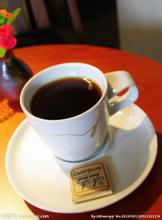Introduction to quality and taste grinding scale of coffee bean flavor description method in Jinchu Valley, Kenya
Introduction to quality and taste grinding scale of coffee bean flavor description method in Jinchu Valley, Kenya
Jinchugu was founded in 1970. Together with Kamviu, Gakundu and Ka Kui washing Plant, they formed the Gakundu Farmers' Cooperative. There are 980 coffee farmers in Jinchu Valley and 3600 small farmers are registered in the whole cooperative. In Enbu county, nearly 85% of coffee cultivation comes from small farmers. They picked the ripe coffee fruit and sent it to the water washing station for centralized treatment. the coffee fruit was peeled in the Enbu processing plant, fermented overnight, washed and then dried naturally on an elevated shed to dry each of the previous Kenya. we all especially like to pursue those angular strong acidity, and this Kenya makes me feel gentle, like facing the sea, with a breeze blowing. Unlike Kenya, which used to be dominated by berry flavor, this Kenya has very delicate sour red wine, cherry sweetness, BlackBerry lip and tooth aroma, and black plum and sugar finish, although the baking degree is set to medium-light baking, but under this baking degree, the mellow thickness can be kept on the high side.
The coffee producing areas in Kenya are mainly concentrated in the plateau areas represented by Mount Mt.Kenya. Tropical climate, acid red volcanic soil provides a natural and suitable growth environment for coffee. The seven largest producing areas are the most famous, including Nieri, Sika, Chiambu, Geliniya, Ruiru, Mulanga and the western side of Mount Kenya. Major producing areas such as Nyeri and Ruiru large farms in the middle usually have independent treatment facilities. A large number of small farmers usually pick ripe coffee fruits by hand. Coffee picking is a labor-intensive job that requires the whole family to deploy and even hire workers during the harvest season. The fresh fruit of the picked coffee needs to be delivered in time to the cooperative-owned coffee processing plant for pulping, which may be carried by ox carts, pick-up trucks or trucks. After peeling, shell beans (Parchmentcoffee) are briefly kept in cooperative processing plants and sent to privately owned factories for shelling. Kenya is a well-known producer classified by the size of coffee beans. It is usually divided into nine grades, according to the bean type, there are PB (round beans, accounting for about 10% of the total output), in addition, there are E (elephant beans), AA, AB, C, T, TT, MH, ML according to size. The best coffee grade is bean-shaped berry coffee PB, followed by AA++, AA+, AA, AB and so on.
Usually Kenyan coffee is classified as follows:
1) Common categories:
The hand-picked coffee fruit is picked by hand, picked out immature fruit (unripe), overripe fruit (overripe) and other defects, peeled, fermented for about 36 hours, sun-dried on a metal grid, and then removed from the seed shell (parchment) in the processing plant to become a charming Kenyan raw bean with a blue-green appearance.

Important Notice :
前街咖啡 FrontStreet Coffee has moved to new addredd:
FrontStreet Coffee Address: 315,Donghua East Road,GuangZhou
Tel:020 38364473
- Prev

Introduction of grinding scale for quality and taste characteristics of Kenyan coffee varieties by flavor description treatment
E:kenyaE, elephant bean, elephantbean,18 above (including round bean) AA:KenyaAA,17-18 mesh, AB:KenyaAB,15-16 mesh, An and B grade mixed TT:AA, AB light bean selected by air flow separator above PB:KenyaPB,15 mesh, round bean TT:AA 12-14 mesh, and PB light bean selected by air flow separator below 12 mesh.
- Next

Characteristics of Yunnan small-grain Coffee introduction to the flavor description and treatment of Huaguoshan coffee
Yunnan small-grain coffee beans introduce that the growth and development of coffee is closely related to the climatic and environmental conditions. In the areas where the wind is strong, the temperature is high, the light is strong, and the soil is easy to dry, the axillary buds of plant branches tend to differentiate into flower buds, and the growth of branches is small, which is easy to cause premature senescence. Therefore, it is necessary to choose a place with quiet wind, high humidity and short light as a garden. Small coffee is a plant that needs water and is afraid of too much water.
Related
- Detailed explanation of Jadeite planting Land in Panamanian Jadeite Manor introduction to the grading system of Jadeite competitive bidding, Red bid, Green bid and Rose Summer
- Story of Coffee planting in Brenka region of Costa Rica Stonehenge Manor anaerobic heavy honey treatment of flavor mouth
- What's on the barrel of Blue Mountain Coffee beans?
- Can American coffee also pull flowers? How to use hot American style to pull out a good-looking pattern?
- Can you make a cold extract with coffee beans? What is the right proportion for cold-extracted coffee formula?
- Indonesian PWN Gold Mandrine Coffee Origin Features Flavor How to Chong? Mandolin coffee is American.
- A brief introduction to the flavor characteristics of Brazilian yellow bourbon coffee beans
- What is the effect of different water quality on the flavor of cold-extracted coffee? What kind of water is best for brewing coffee?
- Why do you think of Rose Summer whenever you mention Panamanian coffee?
- Introduction to the characteristics of authentic blue mountain coffee bean producing areas? What is the CIB Coffee Authority in Jamaica?

